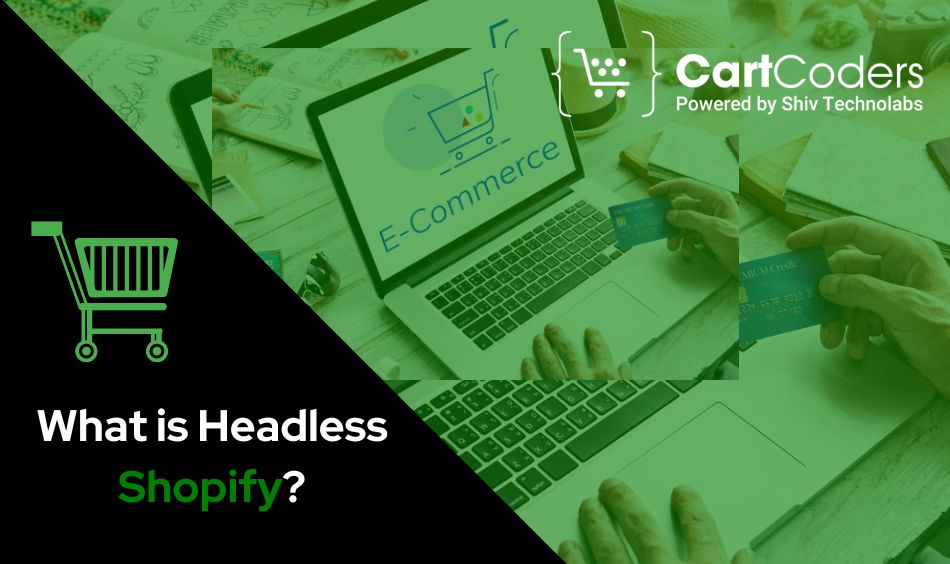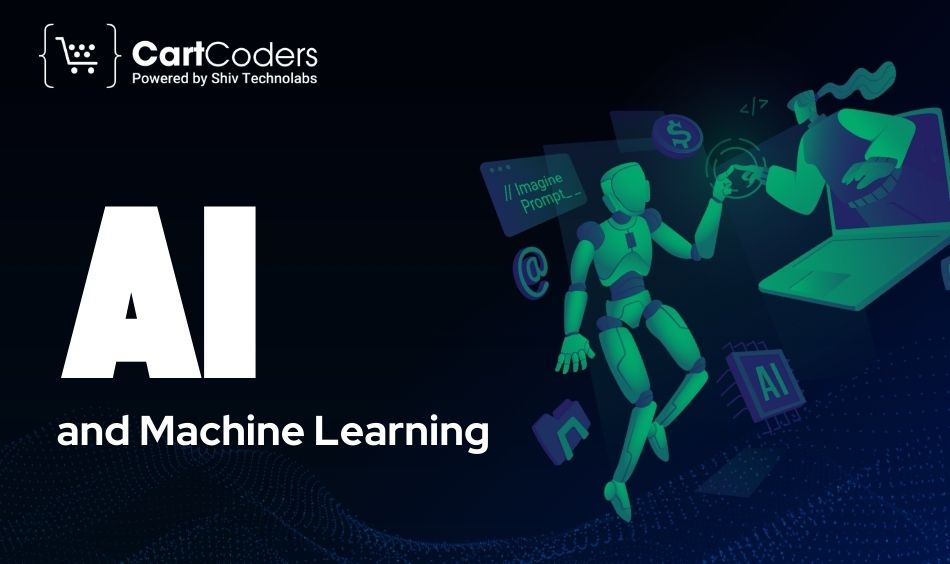Custom Engagement Solutions
Unlock tailored solutions with a free, no-obligation strategy session.
Expert Developers & Engineers on Demand
Scale Your Team with Skilled IT Professionals
Expert Guidance for Digital Transformation

User experience (UX) is a critical factor in the success of any e-commerce business. In today’s competitive market, providing a seamless, personalized, and engaging shopping experience is more important than ever. Shopify’s headless commerce architecture offers the flexibility and power to create these unique experiences. By decoupling the frontend and backend, headless commerce allows businesses to leverage modern web technologies to build tailored and high-performing e-commerce sites. This approach not only enhances user engagement but also sets businesses apart from their competitors. The ability to integrate various third-party tools and deliver dynamic content is transforming the way businesses operate online, making Shopify headless commerce a game-changer
for e-commerce development.

Headless Shopify is a modern approach to e-commerce development where the frontend and backend are decoupled. In traditional e-commerce setups, the frontend (what users see and interact with) and backend (where data is managed) are tightly linked. Headless commerce breaks this connection, allowing developers to use any frontend technology to deliver content via APIs. This decoupling offers unmatched flexibility, enabling businesses to create unique user experiences without being constrained by the limitations of their e-commerce platform’s frontend capabilities. With headless commerce, developers can build custom solutions that integrate seamlessly with various systems and services, enhancing the overall functionality and performance of the e-commerce site
Traditional e-commerce setups often come with inherent limitations that can restrict the creative freedom of developers and designers. In contrast, headless Shopify allows for greater innovation and customization. By separating the frontend from the backend, businesses can experiment with different design approaches and technologies without affecting the underlying infrastructure. This flexibility is particularly beneficial for companies that need to respond quickly to market changes and customer demands. Additionally, headless Shopify provides better scalability, making it easier to manage high traffic volumes and complex functionalities. This approach also facilitates more efficient
development workflows, as teams can work independently on the frontend and backend, speeding up the overall development process.
Also read : Top 10 Best Shopify Search Apps in 2024
Headless Shopify brings numerous benefits that can significantly enhance an e-commerce business. The flexibility and performance improvements alone make it a compelling choice for many merchants.
By decoupling the frontend from the backend, headless Shopify provides developers with the freedom to design and build unique user interfaces. This means businesses can implement custom designs and user experiences that are tailored to their brand, without being limited by Shopify’s builtin themes or templates. This flexibility is crucial for creating a distinct and memorable online presence. Developers can use modern frameworks like React, Vue.js, or Angular to create highly interactive and visually appealing storefronts that engage customers and drive conversions. This level of customization can also help businesses better align their online presence with their overall brand strategy, enhancing brand recognition and loyalty.
One of the primary advantages of headless commerce is the potential for improved site performance. By separating the frontend from the backend, developers can optimize each part independently. This often results in faster load times and a smoother user experience, which are critical factors in reducing bounce rates and increasing conversions. Optimized performance not only improves the user experience but also has a positive impact on search engine rankings, as search engines favor faster-loading sites. Additionally, headless architecture allows for better resource management, enabling sites to handle large volumes of traffic without compromising on speed or reliability. This is particularly important during peak shopping periods, such as holiday sales or special promotions.
Headless Shopify makes it easier to integrate with various third-party tools and services, such as content management systems (CMS), customer relationship management (CRM) software, and marketing automation platforms. These integrations can enhance the functionality of an e-commerce site and provide a more cohesive user experience. By leveraging APIs, businesses can seamlessly connect their Shopify store with a wide range of tools that enhance marketing, customer service, analytics, and more. This level of integration allows for a more streamlined operation, reducing the complexity of managing multiple systems and improving overall efficiency. Additionally, seamless integrations enable businesses to quickly adapt to new technologies and trends, ensuring they remain
competitive in the ever-evolving e-commerce landscape.
As businesses grow, their e-commerce needs often become more complex. Headless Shopify offers better scalability compared to traditional setups, allowing businesses to handle increased traffic and transaction volumes without compromising performance. The decoupled nature of headless commerce means that businesses can scale their frontend and backend independently, optimizing each component as needed. This flexibility is crucial for accommodating growth and ensuring that the e-commerce platform can handle spikes in traffic during peak periods. Additionally, headless architecture makes it easier to implement new features and functionalities, enabling businesses to continually enhance their offerings and stay ahead of the competition.
With headless Shopify, businesses can implement advanced SEO strategies and marketing tools that may not be possible with a traditional setup. This can lead to improved search engine rankings and more effective marketing campaigns, ultimately driving more traffic and sales. Headless commerce allows for greater control over the structure and content of the website, enabling businesses to implement SEO best practices more effectively. This includes optimizing page load times, using clean and efficient code, and ensuring that the site is mobile-friendly. Additionally, headless architecture facilitates the use of dynamic content and personalized marketing strategies, which can significantly enhance the effectiveness of marketing campaigns and improve customer engagement.
Also read : 9 Benefits of Implementing Headless Commerce for Your Shopify Store
Customizing user experiences with Shopify headless commerce involves several key techniques and strategies that can significantly enhance the way customers interact with your e-commerce site.
Personalization is at the heart of a great user experience. With headless Shopify, businesses can leverage customer data to create tailored experiences for each visitor. This includes personalized product recommendations, dynamic content based on user behavior, and targeted promotions. By delivering relevant content and products, businesses can increase engagement and drive higher conversion rates. Personalization can also enhance customer satisfaction by making the shopping experience more relevant and enjoyable. Advanced analytics and machine learning algorithms can help businesses understand customer preferences and behaviors, enabling them to deliver more accurate and impactful personalization.
Collecting and analyzing customer data allows businesses to understand their audience better and deliver experiences that resonate with them. This can include personalized email campaigns, special offers based on purchase history, and customized landing pages that cater to specific user segments. By leveraging data from various touchpoints, businesses can create a holistic view of their customers and deliver more targeted and effective marketing strategies. Additionally, utilizing customer data can help businesses identify trends and patterns, enabling them to anticipate customer needs and preferences and deliver more relevant and timely experiences.
Headless Shopify enables the delivery of dynamic content that changes based on user interactions. This can include personalized product recommendations, which are shown to users based on their browsing history, preferences, and previous purchases. Dynamic content keeps the shopping experience fresh and engaging, encouraging users to explore more products. By using machine learning algorithms, businesses can deliver more accurate and relevant recommendations, increasing the likelihood of conversions. Additionally, dynamic content can be used to create personalized landing pages, promotional banners, and other elements that enhance the overall user experience.
Headless Shopify allows for advanced design capabilities that can create a unique and engaging user interface. By using modern frontend frameworks like React, Vue.js, or Angular, businesses can develop visually stunning and highly interactive storefronts. This level of customization can help differentiate a brand and provide a superior shopping experience. Advanced design capabilities also enable businesses to create responsive and mobile-friendly designs that provide a consistent experience across all devices. This is particularly important in today’s multi-device world, where customers expect seamless and intuitive experiences regardless of the device they are using.
Modern frontend frameworks offer numerous benefits, including faster development times, better performance, and more interactive user interfaces. By using these technologies, businesses can create cutting-edge e-commerce sites that stand out from the competition. These frameworks also provide developers with a wide range of tools and libraries that can streamline the development process and enhance the overall unctionality of the site. Additionally, modern frontend frameworks are continuously evolving, providing businesses with access to the latest features and innovations that
can help them stay ahead of the curve.
The freedom to design custom user interfaces means businesses can align their online presence with their brand identity. This can include unique layouts, interactive elements, and seamless navigation, all of which contribute to a better user experience. By creating visually appealing and intuitive interfaces, businesses can enhance customer satisfaction and encourage repeat visits. Custom user interfaces also enable businesses to highlight key products and promotions, guiding users through the shopping journey and increasing the likelihood of conversions. Additionally, a well-designed user interface can enhance the overall perception of the brand, making it more attractive and trustworthy to customers.
In today’s multi-device world, providing a seamless shopping experience across all channels is essential. Headless Shopify supports omni-channel experiences by ensuring consistency in design, functionality, and content across devices and platforms. This approach helps businesses maintain a cohesive brand presence and improve customer satisfaction. By centralizing content management and delivery, businesses can ensure that users receive the same high-quality experience whether they are shopping on a desktop, mobile device, or through a mobile app. This consistency is crucial for building trust and loyalty, as customers expect a seamless and reliable experience regardless of the channel they use.
Headless commerce allows businesses to manage content and design centrally, ensuring that the user experience is consistent whether customers are shopping on a desktop, mobile device, or through a mobile app. This centralization simplifies content management and ensures that updates and changes are reflected across all channels. Consistency across devices and platforms is crucial for maintaining brand integrity and providing a cohesive shopping experience. It also helps businesses deliver a more professional and polished online presence, which can enhance customer trust and satisfaction.
Mobile apps and PWAs can enhance the shopping experience by providing faster load times, offline capabilities, and push notifications. Headless Shopify makes it easier to integrate with these technologies, offering users a superior mobile shopping experience. PWAs combine the best features of web and mobile apps, providing a fast and reliable experience even in low-network conditions. This makes them an ideal solution for businesses looking to enhance their mobile presence. Additionally, mobile apps and PWAs can offer personalized experiences, leveraging device capabilities to deliver more engaging and interactive content.
Optimizing the performance of a headless Shopify store is crucial for providing a fast and smooth user experience. Techniques such as caching, API management, and leveraging CDNs can significantly improve load times and overall performance. Performance optimization not only enhances the user experience but also improves search engine rankings, as search engines prioritize faster-loading sites. Additionally, optimized performance can lead to higher conversion rates, as users are more likely to complete their purchases on a fast and responsive site. Implementing performance optimization techniques requires a comprehensive approach, including regular monitoring and fine-tuning to ensure that the site remains fast and reliable.
Caching and using a content delivery network (CDN) can reduce load times by storing copies of your site’s content closer to your users. Additionally, optimizing images and minimizing JavaScript can further enhance performance. These techniques help reduce the time it takes for the site to load, providing a smoother and more enjoyable user experience. By implementing lazy loading for images and deferring non-critical JavaScript, businesses can improve initial load times and ensure that the site remains fast and responsive as users interact with it.
Efficient API management ensures that data is delivered quickly and reliably, while caching helps reduce server load and improve response times. These techniques are essential for maintaining a high-performing e-commerce site. By optimizing API calls and implementing caching strategies, businesses can ensure that their site remains fast and reliable, even during peak traffic periods. Additionally, efficient API management can help reduce operational costs by minimizing server resources and improving overall efficiency.

AI and machine learning can take personalization to the next level by providing insights into customer behavior and automating various aspects of the user experience. This includes personalized recommendations, search results, and customer support. AI-powered tools can analyze vast amounts of data to identify patterns and trends, enabling businesses to deliver more accurate and relevant experiences. Machine learning algorithms can continuously learn and adapt, ensuring that personalization strategies remain effective over time. Additionally, AI-driven automation can help streamline operations and improve efficiency, freeing up resources for other critical tasks.
AI-powered recommendation engines can analyze user data to provide highly relevant product suggestions. Similarly, AI can improve search functionality by understanding user intent and delivering more accurate results. Personalized recommendations and search results can significantly enhance the user experience by making it easier for customers to find products that match their preferences and needs. This can lead to higher engagement and conversion rates, as users are more likely to purchase products that are relevant to them. Additionally, personalized recommendations can help businesses increase average order value by encouraging users to explore complementary products.
AI-driven chatbots and virtual assistants can provide instant support to customers, answering questions, guiding them through the purchase process, and resolving issues. This enhances the overall user experience and reduces the burden on customer support teams. By providing 24/7 support, chatbots and virtual assistants can ensure that customers receive timely and accurate assistance, improving satisfaction and loyalty. Additionally, AI-powered support tools can learn from interactions and continuously improve, providing more effective and personalized assistance over time. This can help businesses build stronger relationships with their customers and drive long-term success.
Customizing user experiences with Shopify headless commerce offers unparalleled flexibility, performance, and personalization capabilities. By leveraging modern frontend technologies and integrating seamlessly with third-party tools, businesses can create unique and engaging shopping experiences that drive customer satisfaction and loyalty. Headless commerce enables businesses to stay ahead of the competition by providing a superior user experience, optimized performance, and advanced customization options.
For businesses looking to harness the full potential of headless commerce, partnering with a reliable eCommerce Development Company is crucial. CartCoders, as a leading provider of Shopify headless commerce development services, specializes in creating tailored solutions that meet the unique needs of each business. Our expertise and dedication ensure that your Shopify store not only stands out but also delivers an exceptional user experience.
Explore the possibilities with CartCoders and transform your e-commerce store into a powerful, usercentric platform that drives growth and success. Whether you are looking to improve performance, enhance personalization, or create a unique design, our team of experts is here to help you achieve your goals. Contact us today to learn more about our Shopify headless commerce development services and how we can help you elevate your e-commerce business.
Projects delivered in 15+ industries.
95% retention rate, building lasting partnerships.
Serving clients across 25+ countries.
60+ pros | 10+ years of experience.